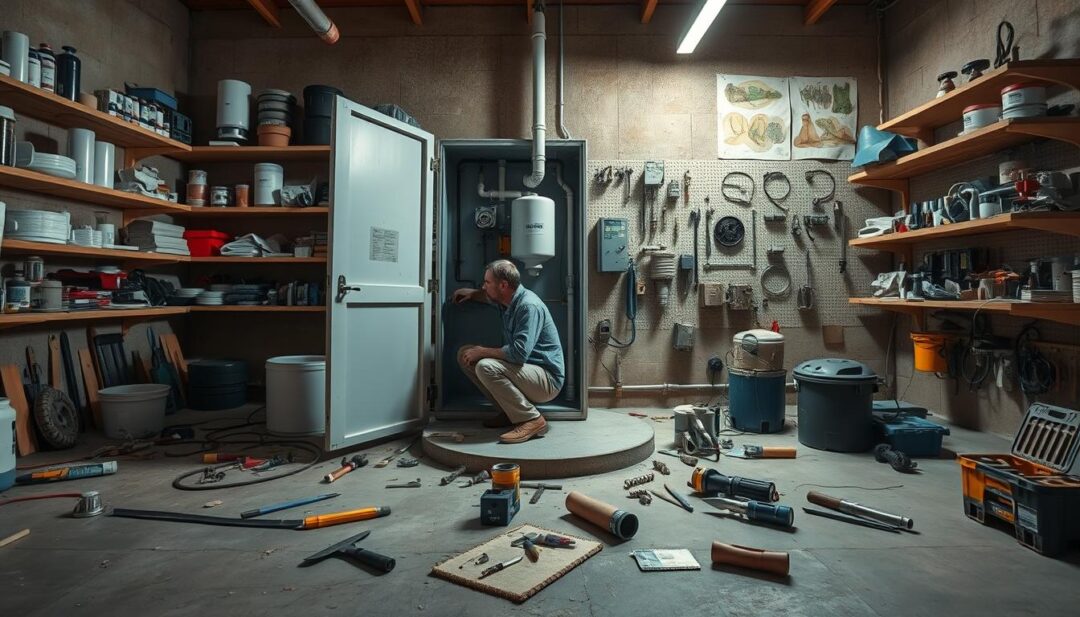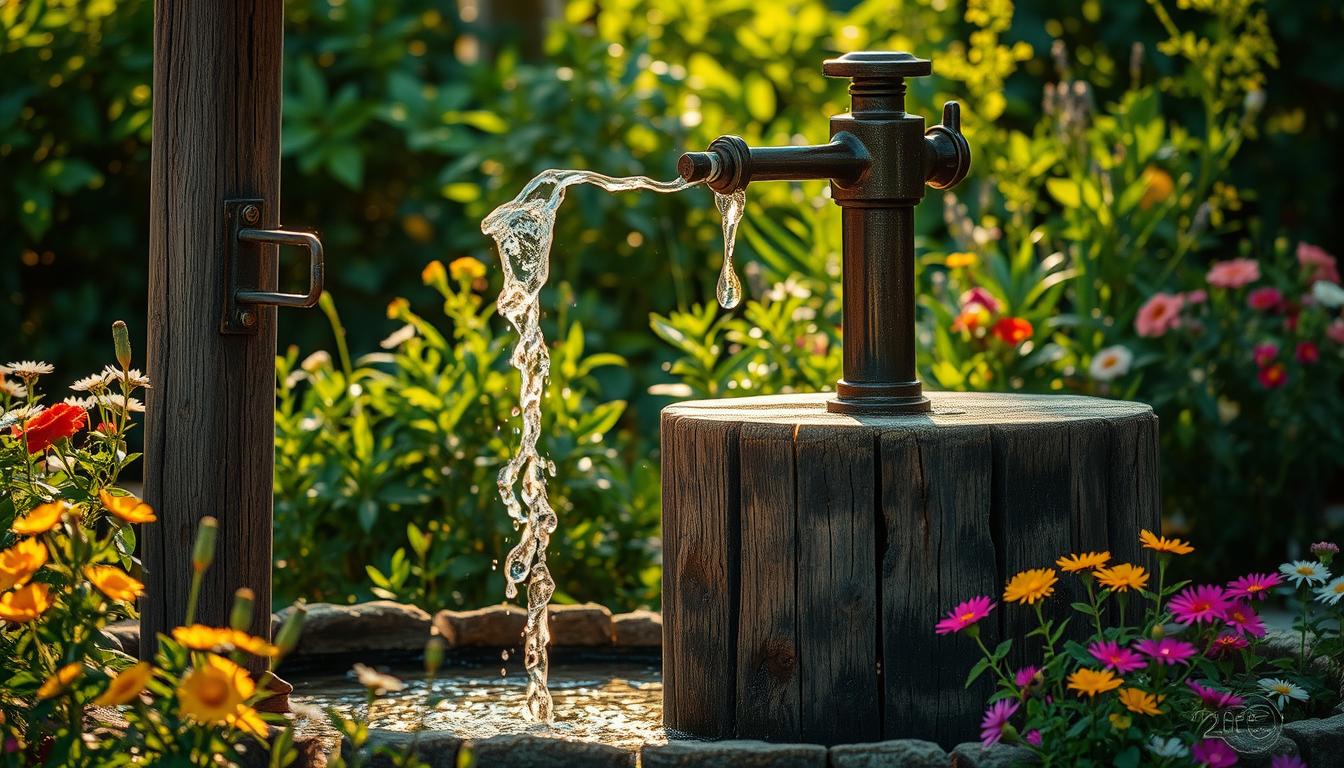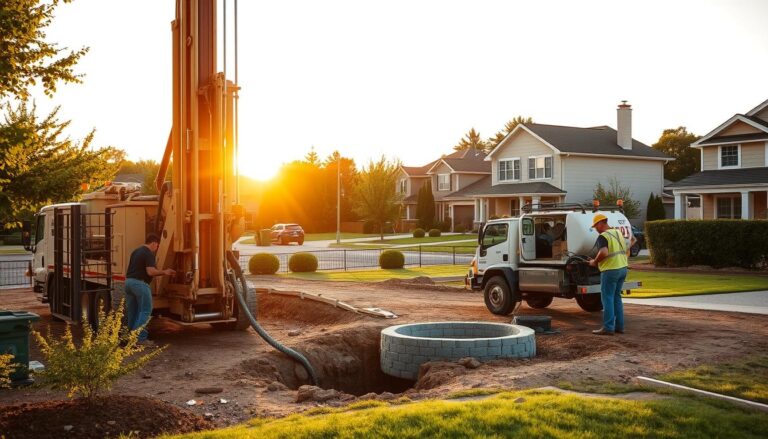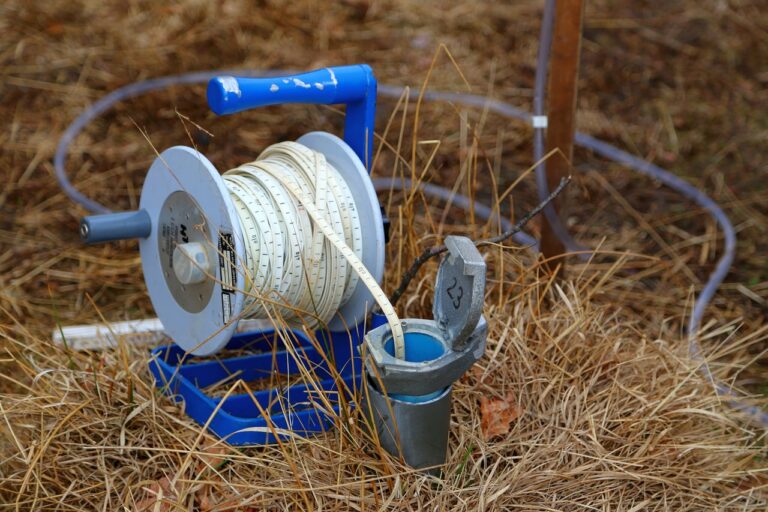How Long Does a Well System Last?
Are you relying on a well system for your water supply and wondering how long it will last? Understanding the longevity of your well system is crucial for maintaining a reliable and efficient water supply.
A well system’s lifespan can vary significantly based on several factors, including the quality of the system, maintenance, and usage patterns. For instance, submersible pumps typically last between 8 to 10 years, while some well pumps can serve homes with moderate water usage for up to 15 years.
Knowing the average lifespan of your well system’s components can help you plan for replacements and avoid unexpected disruptions.
Key Takeaways
- Well system longevity varies based on quality, maintenance, and usage.
- Submersible pumps typically last 8 to 10 years.
- Some well pumps can last up to 15 years with moderate water usage.
- Average water usage per person per day is 100 to 120 gallons.
- A flow rate of 6 to 12 gallons per minute is typically required for an average household.
Understanding Well Systems and Their Components
To appreciate the longevity of a well system, it’s essential to understand its underlying structure and operational mechanics. A well system is not just a single entity; it’s a complex network of components working together to provide clean water to households.
Understanding the different types of well systems and their components is crucial for maintaining and troubleshooting these systems.
Types of Well Systems in the United States
The United States features a variety of well systems, primarily categorized into drilled wells, driven wells, and dug wells. Drilled wells are the most common, especially in areas with deep water tables. Driven wells are suitable for shallow water tables and are often less expensive to install. Dug wells, while less common today, are still found in some rural areas.
| Well Type | Description | Typical Depth |
|---|---|---|
| Drilled Wells | Most common type, suitable for deep water tables | 100-500 feet |
| Driven Wells | Ideal for shallow water tables, less expensive | 30-100 feet |
| Dug Wells | Less common, often found in rural areas | 10-30 feet |
Key Components and Their Functions
A well system consists of several key components, each playing a vital role in its operation. The well casing provides structural integrity, preventing collapse and contamination. The well pump is responsible for drawing water from the well to the surface. Pressure tanks store water under pressure, ensuring a consistent supply. Controllers manage the pump’s operation, turning it on and off as needed.
- Well Casing: Provides structural integrity
- Well Pump: Draws water from the well
- Pressure Tanks: Stores water under pressure
- Controllers: Manages pump operation
As noted by water well experts, “A well-designed well system is crucial for reliable water supply and longevity.” Proper understanding and maintenance of these components are essential for the overall performance and lifespan of the well system.
“The well system is a critical infrastructure for many households, and understanding its components is key to its maintenance and longevity.”
How Long Does a Well System Last? Average Lifespans
Well systems are complex structures with multiple components, each having its own lifespan expectations. Understanding these lifespans is crucial for maintaining a reliable and efficient water supply system.
Well Casing Durability
The well casing is a critical component that provides structural integrity to the well. Typically, a well casing can last between 20 to 50 years or more, depending on the material used and environmental conditions. For instance, stainless steel casings tend to be more durable than those made from other materials.
Well Pump Lifespan Expectations
The well pump is another vital component with a significant impact on the overall system’s performance. On average, a well pump lasts around 10 to 15 years. However, this can vary based on usage patterns, maintenance quality, and the type of pump installed. Regular maintenance can help extend the pump’s lifespan.
Pressure Tanks and Controllers
Pressure tanks and controllers play a crucial role in managing water pressure within the system. The average lifespan of a pressure tank is typically between 5 to 15 years. Factors such as tank material, operating conditions, and maintenance practices influence its longevity. Controllers, being electronic components, may have varying lifespans but generally last several years.
Water Treatment Equipment Longevity
Water treatment equipment, including filters and softeners, have varying lifespans depending on their type, usage, and maintenance. For example, activated carbon filters may need replacement every 6 to 12 months, while water softeners can last 10 to 20 years with proper maintenance. Regular monitoring and maintenance are key to maximizing their lifespan.
By understanding the average lifespans of these components, homeowners can better plan for maintenance and replacements, ensuring their well system operates efficiently for years to come.
Factors Affecting Well System Longevity
Understanding the factors that affect well system longevity is essential for homeowners who want to maximize their system’s lifespan. Several elements can influence the durability and performance of a well system, and being aware of these can help in taking proactive measures to ensure the system remains efficient and effective over time.
Water Quality and Mineral Content
The quality of the water and its mineral content play a significant role in determining the longevity of a well system. Water with high levels of minerals such as iron, manganese, or calcium can lead to scaling and corrosion within the system, potentially damaging pipes, pumps, and other components. Regular water testing can help identify any issues early on, allowing for appropriate treatment measures to be implemented.
Installation Quality and Initial Setup
The initial installation quality of the well system is crucial. A well-designed and properly installed system is less likely to experience problems down the line. This includes ensuring that the well casing is appropriately sealed, the pump is correctly sized for the household’s needs, and all electrical connections are secure. A poor installation can lead to a myriad of issues, including contamination and mechanical failures.
Usage Patterns and Household Demand
Usage patterns and household demand significantly impact the lifespan of a well system. Households with higher water demands put more strain on the system, potentially leading to faster wear and tear on components like the pump. Understanding and managing water usage can help mitigate some of this strain.
Environmental and Geological Factors
Environmental and geological factors, such as droughts, floods, or changes in the water table, can also affect well system longevity. For instance, a drought can lower the water table, potentially causing the well to run dry or putting extra strain on the pump. Being aware of these factors and taking steps to mitigate their impact can help extend the system’s lifespan.
| Factor | Impact on Well System | Mitigation Measures |
|---|---|---|
| Water Quality | Scaling and corrosion | Regular water testing and treatment |
| Installation Quality | Mechanical failures and contamination | Ensure proper installation and initial setup |
| Usage Patterns | Wear and tear on components | Manage water usage effectively |
| Environmental Factors | Changes in water table and strain on system | Monitor environmental conditions and adjust system as needed |
Signs Your Well System Is Aging or Failing
Identifying the early warning signs of well system failure is essential for homeowners relying on well water. Recognizing these signs can help prevent more severe problems and potentially save on costly repairs.
Decreased Water Pressure or Flow
One of the most common indicators of a failing well system is a noticeable decrease in water pressure or flow rate. This could be due to a variety of factors, including a failing well pump, clogged filters, or issues with the pressure tank. Homeowners should be vigilant about monitoring their water pressure, as a drop can signal underlying problems.
Changes in Water Quality or Taste
A change in the taste, odor, or appearance of well water can indicate that the system is failing or that there’s contamination. Regular water quality testing is crucial to identify any changes early. If the water becomes cloudy, discolored, or develops an unpleasant taste or odor, it’s a sign that the well system may need attention.
Unusual Noises, Cycling, or Vibrations
Unusual noises, such as grinding, rattling, or banging sounds coming from the well pump or other system components, can signal mechanical failure. Similarly, if the pump cycles on and off more frequently than usual or if there are noticeable vibrations, these could be signs that the system is under strain or failing.
Increasing Energy Bills and Pump Runtime
A well pump that’s working harder than usual will consume more energy, leading to higher electricity bills. If you notice an unexplained increase in your energy costs, it could be a sign that your well pump is struggling to maintain the required pressure, potentially indicating a failing system.
Being aware of these signs can help homeowners take proactive measures to maintain their well systems. Regular maintenance and inspections are key to extending the lifespan of a well system and ensuring a consistent supply of clean water.
“Regular maintenance is crucial for the longevity of a well system. Neglecting maintenance can lead to premature failure and costly repairs.”
Essential Maintenance to Extend Well System Lifespan
To ensure your well system operates efficiently for years to come, regular maintenance is key. A well-maintained system not only prolongs its lifespan but also ensures the continuous supply of clean water. Regular checks and maintenance tasks can help identify potential issues before they become major problems.
Annual Well Inspections and Documentation
Conducting annual inspections is crucial for the longevity of your well system. These inspections should include checking the well casing, cap, and surrounding area for any signs of damage or contamination. Documentation of these inspections can help track the system’s performance over time and identify any recurring issues.
Regular Water Quality Testing Schedule
Regular water quality testing is essential to ensure the water from your well is safe to drink. It’s recommended to test the water at least once a year for bacteria, nitrates, and other contaminants. More frequent testing may be necessary depending on the well’s location and surrounding land use.
Pump and Pressure Tank Maintenance
The pump and pressure tank are critical components of your well system. Regular maintenance includes checking the pump’s performance, inspecting for leaks, and ensuring the pressure tank is functioning correctly. Proper maintenance of these components can significantly extend the lifespan of your well system.
Protecting Your Well from Contamination
Protecting your well from contamination is vital for maintaining water quality. This includes ensuring the well is properly sealed, keeping the surrounding area free from potential contaminants, and being mindful of nearby activities that could impact water quality. Regular inspections and maintenance can help prevent contamination.
When and How to Replace Well System Components
As your well system ages, knowing when and how to replace its components becomes essential. Regular maintenance is key to extending the lifespan of your well system, but eventually, certain parts will need to be replaced to maintain efficiency and water quality.

One of the most critical components that may need replacement is the well pump. Well pump replacement is often necessary due to wear and tear over time. The process involves several steps, including shutting off the power supply, removing the old pump, inspecting the well casing, and installing a new pump that matches the specifications of the original equipment.
Well Pump Replacement Process
The well pump replacement process requires careful consideration to ensure that the new pump is compatible with your existing well system. It’s advisable to consult a professional to avoid any potential issues during the replacement process. They can assess the condition of your well and recommend the most suitable pump based on factors like the well’s depth and water demand.
Pressure Tank Upgrades and Sizing
Pressure tank upgrades are another crucial aspect of maintaining your well system. Upgrading your pressure tank can improve the overall efficiency of your system by providing a more consistent water pressure. When sizing a new pressure tank, it’s essential to consider factors such as the well pump’s flow rate and the household’s water demand to ensure the tank is adequately sized.
Well Rehabilitation Techniques
In some cases, rather than replacing the entire well, well rehabilitation techniques can be employed to restore the well’s efficiency. This may involve cleaning the well, replacing the well screen, or using chemical treatments to remove any buildup or contaminants. Well rehabilitation can be a cost-effective solution to extend the life of your well.
When to Consider a Completely New Well
There are situations where replacing the entire well system might be more economical than continually replacing components. If your well is old, inefficient, or has recurring problems despite maintenance and component replacements, it may be time to consider drilling a new well. Consulting with a well drilling professional can help you determine the best course of action based on your specific situation.
By understanding when and how to replace well system components, you can ensure a reliable and efficient water supply for your household. Regular maintenance and timely replacements are key to maximizing the lifespan of your well system.
“A well-maintained well system is crucial for a reliable water supply. Knowing when to replace components can save homeowners from unexpected failures and costly repairs.”
Cost Considerations for Well System Maintenance and Replacement
The cost of maintaining and replacing well systems is a critical factor for homeowners relying on these systems. Understanding the various expenses involved can help homeowners budget effectively and make informed decisions about their well systems.
Preventative Maintenance Investment
Investing in preventative maintenance is crucial for extending the lifespan of a well system. Regular inspections and water quality testing can help identify potential issues before they become major problems, saving homeowners from costly repairs down the line. The average annual cost for preventative maintenance can range from $100 to $300, depending on the complexity of the system and the frequency of inspections.
Component Replacement Expenses by Region
The cost of replacing well system components can vary significantly depending on the region, due to differences in labor costs, material prices, and local regulations. For instance, replacing a well pump can cost anywhere from $500 to $1,500, with the average cost being around $900. Homeowners should research local prices and consult with professionals to get accurate estimates for their specific needs.
Complete Well System Replacement Costs
In some cases, it may be more cost-effective to replace the entire well system rather than repairing or replacing individual components. The cost of a complete well system replacement can range from $3,000 to $10,000 or more, depending on the depth of the well, the type of pump and other equipment required, and labor costs. Homeowners should consider factors such as the age and condition of their current system, as well as any changes in their water needs, when deciding whether to replace their well system.
Insurance and Financing Options
Homeowners can explore various insurance and financing options to help manage the costs associated with well system maintenance and replacement. Some insurance policies cover well system repairs or replacements under certain conditions. Additionally, financing options such as loans or grants may be available for homeowners who need to replace their well system or make significant repairs. It’s essential for homeowners to review their insurance policies and explore financing options to understand their financial obligations and potential savings.
Modern Technologies to Improve Well System Durability
Advancements in modern technology are playing a crucial role in improving the efficiency and durability of well systems. By integrating innovative solutions, homeowners can significantly extend the lifespan of their well systems and enhance their overall performance.
Variable Speed Pump Systems
Variable speed pump systems are revolutionizing the way well water is managed. These systems adjust the pump speed according to the household’s water demand, reducing wear and tear on the pump and improving energy efficiency. Key benefits include:
- Reduced energy consumption
- Less strain on the well pump
- Constant water pressure
By adopting variable speed pumps, homeowners can enjoy a more reliable and cost-effective well system operation.
Smart Well Monitoring Solutions
Smart well monitoring solutions offer real-time insights into the well system’s performance, enabling homeowners to identify potential issues before they become major problems. These systems can monitor water levels, pressure, and quality, providing valuable data for maintenance and troubleshooting.

Advanced Filtration and Treatment Options
Advanced filtration and treatment technologies are crucial for ensuring the quality and safety of well water. Modern systems can effectively remove contaminants and minerals, improving the taste and potability of the water. Some of the advanced treatment options include:
- Reverse osmosis systems
- UV treatment systems
- Activated carbon filtration
By incorporating these technologies, homeowners can enjoy cleaner, safer drinking water and reduce the risk of waterborne illnesses.
Conclusion
Understanding the longevity of your well system is crucial for ensuring a reliable water supply. By recognizing the average lifespans of various components and the factors that affect their durability, you can take proactive steps to extend well system lifespan.
Regular maintenance is key to maximizing well system lifespan. Annual inspections, water quality testing, and pump maintenance can help identify potential issues before they become major problems, ultimately helping to ensure well system durability.
Leveraging modern technologies, such as variable speed pump systems and smart well monitoring solutions, can also contribute to a longer lifespan for your well system. By adopting these advancements, you can improve the overall efficiency and reliability of your well system, thereby extending its lifespan.
By combining regular maintenance with modern technologies, you can enjoy a reliable and sustainable water supply for years to come, while also maximizing your well system’s lifespan.
FAQ
How long does a typical well system last?
What are the key factors that affect well system longevity?
How often should I inspect my well system?
What are the signs that my well system is aging or failing?
Can modern technologies improve well system durability?
How can I extend the lifespan of my well system?
What is the average cost of replacing a well system component?
How long does a typical well system last?
What are the key factors that affect well system longevity?
How often should I inspect my well system?
What are the signs that my well system is aging or failing?
Can modern technologies improve well system durability?
How can I extend the lifespan of my well system?
What is the average cost of replacing a well system component?
FAQ
How long does a typical well system last?
The average lifespan of a well system varies, but with proper maintenance, it can last for several decades. Factors such as water quality, installation quality, and usage patterns can affect its longevity.
What are the key factors that affect well system longevity?
Water quality and mineral content, installation quality, usage patterns, and environmental factors can all impact how long a well system lasts. Regular maintenance is crucial to maximizing its lifespan.
How often should I inspect my well system?
Annual inspections are recommended to ensure the well system is functioning properly and to identify potential issues before they become major problems.
What are the signs that my well system is aging or failing?
Decreased water pressure or flow, changes in water quality or taste, unusual noises, and increasing energy bills are all indicators that the well system may be aging or failing.
Can modern technologies improve well system durability?
Yes, technologies such as variable speed pump systems, smart well monitoring solutions, and advanced filtration and treatment options can help improve the durability and efficiency of well systems.
How can I extend the lifespan of my well system?
Regular maintenance, including annual inspections, water quality testing, and pump and pressure tank maintenance, can help extend the lifespan of a well system.
What is the average cost of replacing a well system component?
The cost of replacing a well system component varies depending on the component, region, and other factors. On average, replacing a well pump can cost between 0 to
FAQ
How long does a typical well system last?
The average lifespan of a well system varies, but with proper maintenance, it can last for several decades. Factors such as water quality, installation quality, and usage patterns can affect its longevity.
What are the key factors that affect well system longevity?
Water quality and mineral content, installation quality, usage patterns, and environmental factors can all impact how long a well system lasts. Regular maintenance is crucial to maximizing its lifespan.
How often should I inspect my well system?
Annual inspections are recommended to ensure the well system is functioning properly and to identify potential issues before they become major problems.
What are the signs that my well system is aging or failing?
Decreased water pressure or flow, changes in water quality or taste, unusual noises, and increasing energy bills are all indicators that the well system may be aging or failing.
Can modern technologies improve well system durability?
Yes, technologies such as variable speed pump systems, smart well monitoring solutions, and advanced filtration and treatment options can help improve the durability and efficiency of well systems.
How can I extend the lifespan of my well system?
Regular maintenance, including annual inspections, water quality testing, and pump and pressure tank maintenance, can help extend the lifespan of a well system.
What is the average cost of replacing a well system component?
The cost of replacing a well system component varies depending on the component, region, and other factors. On average, replacing a well pump can cost between $500 to $1,500, while a pressure tank replacement can range from $200 to $500.
Are there financing options available for well system maintenance and replacement?
Yes, there are financing options and insurance policies available that can help homeowners cover the costs of well system maintenance and replacement.
,500, while a pressure tank replacement can range from 0 to 0.
Are there financing options available for well system maintenance and replacement?
Yes, there are financing options and insurance policies available that can help homeowners cover the costs of well system maintenance and replacement.







